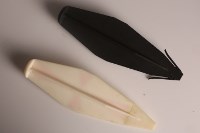William Frick & Company, one of the top US label, sign and RFID tag manufacturing companies recently announced the addition of 3D printing for prototyping to its extensive list of available products and services.
As the cost and difficulty drops more and more, traditional manufacturers are turning to 3D printing, not as a replacement for the high volume manufacturing that they are already doing, but to simplify and speed up the prototype process. Traditionally customers would bring ideas to manufacturers like Frick who would have to design a CAD drawing and send it out to be manufactured or machined, often at great expense and with a lengthy turnaround time. Fricks’s Product Development Manager John Poplawski explained that 3D printing is a natural addition to the prototyping process.
“Now, most designs created in CAD can be reviewed using the 3D printer, including complex shapes with small, intricate details. The process takes hours, not weeks—and at significantly lower costs. It’s a very exciting time for product development.”

“Some of the more complex uses for RFID applications require tags with custom housing that maximizes mounting and performance options,” explains Frick President Jeff Brandt. “These applications may require tags to be hermetically sealed for use in a harsh environment, for example.”
” src=”https://3dprintingindustry.com/wp-content/uploads/2014/01/RFID-tag-3D-Printing.jpg” width=”700″ height=”322″ />
Many traditional manufacturing companies have long dismissed 3D printing as a fad, or as an attempt to replace their businesses, but more and more of them are seeing the potential for incorporating the technology into their existing business models. And whenever two emergent technologies — RFID and 3D printing — are combined, things are bound to get interesting.

Leave A Comment